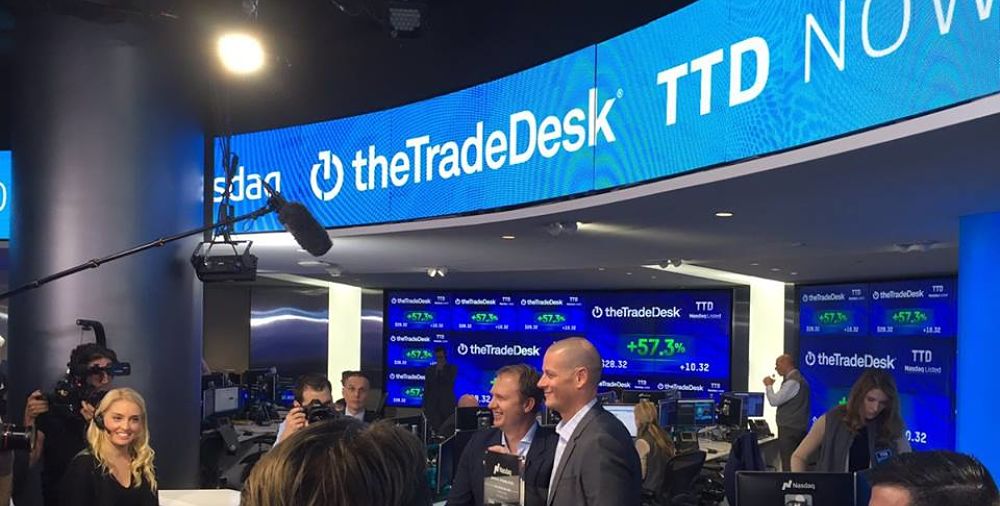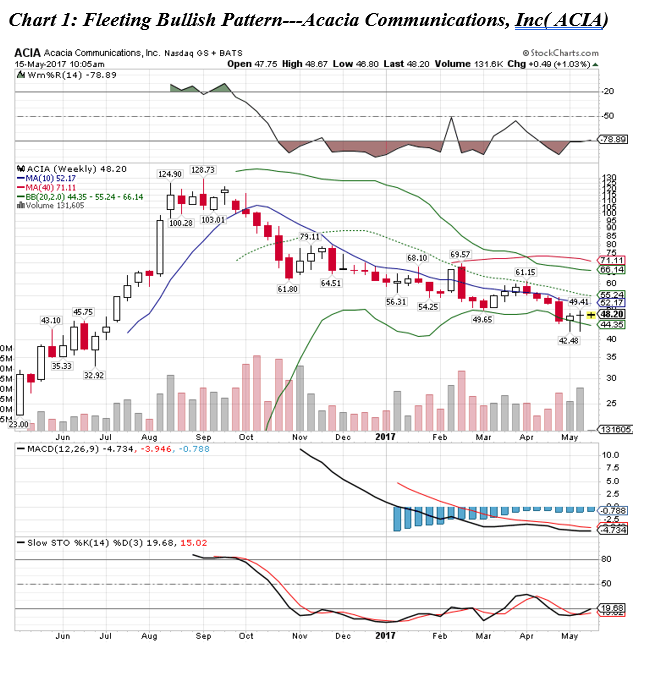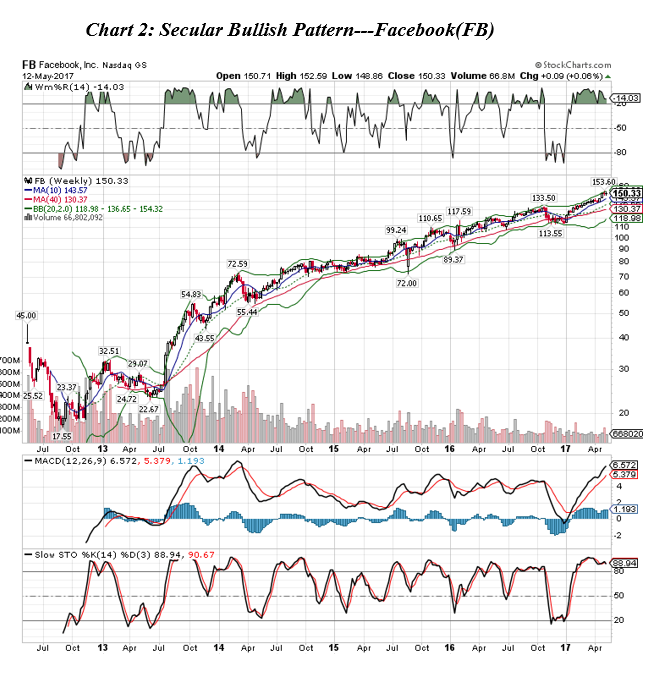IPO Stocks: A Bull Case for Trade Desk?
Gunning Ju Follow | Image via Trade Desk/Facebook
Image via Trade Desk/Facebook
Major market indices showed divergence during the past month, with the NASDAQ composite index chugging to new highs, while the S&P 500 and DJIA indices letting up and shaping a potential launch pad. This emerging bifurcation may result from the shifting Trump rally to a normal recovery play. Will the leading NASDAQ index follow the two base-building indices, entering the so-called “sell in May and go away” weak market season?
As financial analyst Mark Hulbert wrote last month, the “sell in May and go away” indicator has existed only in the third years of presidential cycles, and that in the first, second and fourth years of past presidential terms, the pattern was non-existent.
Given that the 10-year treasury yield at 2.39% is 60% lower than the S&P 500 yield of 3.9%, the equity market still possesses more attractiveness than the riskless bond markets. However, emerging and European equity markets appear more reasonable or (undervalued) than U.S. markets. The possible asset allocation among global equity markets may cause some profit-taking in U.S. markets. But so far, U.S. markets have not shown any heavy selling pressure during the past month, which is a good omen for the rest of the year.
In bull markets, initial public offering (IPO) stocks often add new blood to the markets. Yet, it is more difficult and trickier to invest in IPO stocks than in established issues. Unlike old shares, most IPO stock prices may encounter tremendous insider selling after the three-to-six-month lockup period expires.
As a result, if you buy an IPO stock, you may incur losses because of this, regardless of the company’s fundamentals. On the other hand, you may also gain huge quickly even though IPO firm’s fundamentals are shaky. This creates the tricky part of IPO investing.
There are two main winning IPO chart patterns after the 2000 internet bubble: secular bullish and fleeting bullish chart patterns.
Fleeting Bullish Pattern:
This pattern occurs when IPO stock prices keep rising after the first trading day without digesting the IPO gains, but then subsequently flops. Acacia Communications Inc. (ACIA)shows a fleeting bullish pattern (See Chart 1). ACIA rose to $128.73 on September 6, 2016 from its IPO price of $23.00 on May 13, 2016, but has fallen to its currently, recently closing at $48.67. During that four-month upsurge, ACIA advanced more than 450% in a short period of time.

Notorious stocks with fleeting bullish patterns are ExOne Co. (XONE), Twitter Inc. (TWTR), and Twilio Inc. (TWLO). The stocks with potential fleeting bullish patterns include: Azul S.A. (AZUL), Floor and Décor Holding Inc. (FND), and Ichor Holding, Ltd. (ICHR).
Investing in these types of stocks requires exceptional skills in entry and exit timing.
Secular Bullish Pattern:
A secular bullish pattern happens when IPO stock prices start falling after the initial hype, then subsequently forming a base. Facebook Inc. (FB)displayed a secular bullish pattern (see Chart 2). Due to the high demand for the shares from investors, underwriters steadily raised Facebook’s IPO price in May 2012 from $28 to $38. The first trading day sent FB’s stock price to a high of $45 but shares closed at $38.23. After that, Facebook then fell all the way to a low of $17.55, forming 14-month base. After upbeat earnings results on July 25, 2013, Facebook’s stock price broke out from the first consolidation, and continued to climb to around $150 where it trades at now.

Currently, lot of stocks show potential secular bullish patterns: Trade Desk Inc. (TTD), Chemours Co. (CC), Goose Holding (GOOS), Shopify, Inc. (SHOP), Trivago NV (TRVG), Veeva Systems Inc. (VEEV), Weibo Corp. (WB), among others.
Trade Desk, a technology company in Ventura, California, operates a self-service cloud-based platform that enables advertising buyers to create, manage, and optimize data-driven digital advertising campaigns using their own teams in the United States and internationally. Its earnings doubled last quarter with revenue expanding by 75%. Its ad business potential could be huge. Can it challenge ad giant Alphabet Inc. (GOOGL)? Time will tell.
TTD’s stock price could move much higher from its current price level. Using William O’Neil’s P/E expansion method, we can do a ballpark target price estimate by looking at the potential P/E expansion multiple and next year’s EPS expectations. In general, growth stocks could top at 2.3 times of their initial breakout P/E level. TTD had a P/E of 31.35 when it broke out from the first stage in February 2017. The company is also expected to post EPS of $1.20 next year. So, by calculating the potentially expanded P/E (31 X 2.3 = 72.1) and next year’s projected EPS of $1.20 would equal $86. This is consistent with the technical target price $90.
From www.equities.com: link below
https://www.equities.com/user/GunningJu



